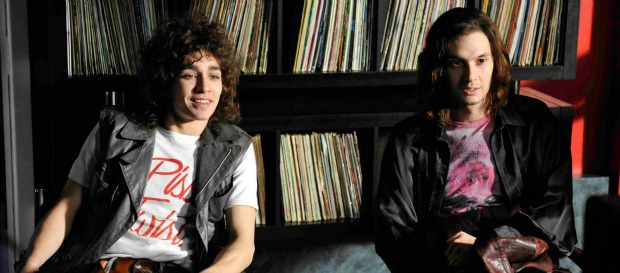Killing Bono
At its purest, Killing Bono is about family, resentment, and dream-chasing.
Plot summary
Two Irish brothers struggle to forge their path through the 1980’s music scene, whilst the meteoric rise to fame of their old school pals, U2, only serves to cast them deeper into the shadows.

“Remember only this: the measure of a man is what’s left when fame falls away.” So says Karl (the late Pete Postlethwaite) in Killing Bono. For Neil McCormick (Ben Barnes), his tenant and wannabe rock star, fame hasn’t had a chance to fall away. He hasn’t even got that far, despite his best efforts.
Barnes’ character is based on the real life Neil McCormick, now an esteemed music critic, who chased his dream of rock stardom throughout the eighties and early nineties, forever living in the shadow of his childhood friend Bono – the Bono, of U2 fame – hence the title of the film, taken from the Real Neil’s self-deprecating memoir ‘Killing Bono: I Was Bono’s Doppelganger’.
Killing Bono is a version of a version of Neil McCormick’s story, with gangsters and guns thrown in for a ‘high-jinks and capers’ element. Barnes plays Neil McCormick as determined and envious, always reaching for the top but never quite getting there. He is good-looking enough and talented enough to become a successful front man, but never lives up to his own potential – let alone that of Bono (Martin McCann) et al – choosing gimmicky costumes and dance moves to attract the crowds. Neil’s long-suffering brother Ivan (Robert Sheehan) goes along with misguided brother, unaware that a pre-Bono Paul Hewson had wanted him to join his band. Neil turned the request down on his behalf, keeping Ivan as his own guitarist.
The Real Neil has written about how bizarre it is to see his life retold on screen, himself played as a buffoon with every mistake magnified, along with some invented mishaps. If you are aware of the story behind the film, half the fun is guessing which parts are true and which are inventions of the filmmakers. The costumes are hideously realistic, and Nick Hamm’s visions of Dublin and London in the eighties are well-conceived.
Barnes and Sheehan are convincing as brothers in a love/hate relationship, both depending on and in despair of each other. Martin McCann bears a scary resemblance to Bono, even convincing Real Neil, who saw him from a distance while on set, and has obviously studied his mannerisms into the ground. Krysten Ritter is fine as McCormick’s love interest Gloria, Peter Serafinowicz makes an appearance as ridiculous record label exec Hammond, and Postlethwaite is charming as a flamboyant landlord in what was to be his final role.
At its purest, Killing Bono is about family, resentment, and dream-chasing. This is where the film shines and you get the sense that this comes from the tone of the book. It falls down in the scenes constructed to make the story more cinematic – they are distracting and often unnecessary. The real stars of the film are U2. Despite a bit of light fun-poking, the portrayal of the band is flattering. Perhaps many people who will go to see a film called ‘Killing Bono’ will find this a disappointment.











COMMENTS